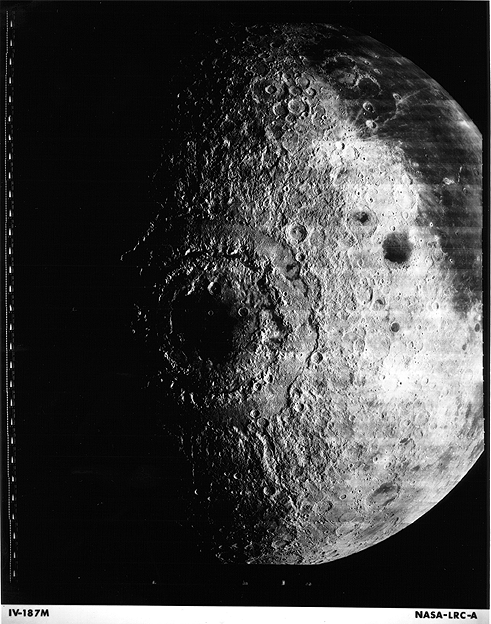 This week's full moon - supposedly one of the 'biggest' in many years (because the Moon was full when it was at perigee) - reminded me of a feature that we never really get to see from Earth, the Mare Orientale basin. It is just over the eastern rim of the Moon as seen from Earth, and is just becoming illuminated at full moon.
This week's full moon - supposedly one of the 'biggest' in many years (because the Moon was full when it was at perigee) - reminded me of a feature that we never really get to see from Earth, the Mare Orientale basin. It is just over the eastern rim of the Moon as seen from Earth, and is just becoming illuminated at full moon.Telescopic observers have known about Mare Orientale since 1906. It sometimes peeks over the rim when the Moon is turned toward us the right way, and at best we can only see a portion of it, and that edge-on, from our vantage point on Earth. So, we all shared a collective gasp at the shock of seeing it when Lunar Orbiter 4 sent back the first dramatic image of it from directly overhead in 1967.
The 600-mile wide basin forms a perfect bulls-eye. The impact that created the feature left a dark 'sea,' and the resultant shock waves from the impact created two perfectly circular and concentric mountain ranges around the maria, the Rook Mountains and the Cordillera Mountains.
This feature is so huge that it could easily be visible with the naked eye from Earth if the Moon were rotated by 90 degrees. Scientists speculate that our ancestors would have evolved their own mythologies or religions based on Mare Orientale if it had been pointed at Earth.
 This map is from the US Geological Survey from 1978. It shows the Orientale basin in great detail. This has always been one of my favorite lunar features. I have seen it edge-on in my telescope a couple of times, and I have seen the Rook and Cordillera Mountains as bumps on the rim of the Moon. I would dearly love to see it from lunar orbit someday!
This map is from the US Geological Survey from 1978. It shows the Orientale basin in great detail. This has always been one of my favorite lunar features. I have seen it edge-on in my telescope a couple of times, and I have seen the Rook and Cordillera Mountains as bumps on the rim of the Moon. I would dearly love to see it from lunar orbit someday!

No comments:
Post a Comment